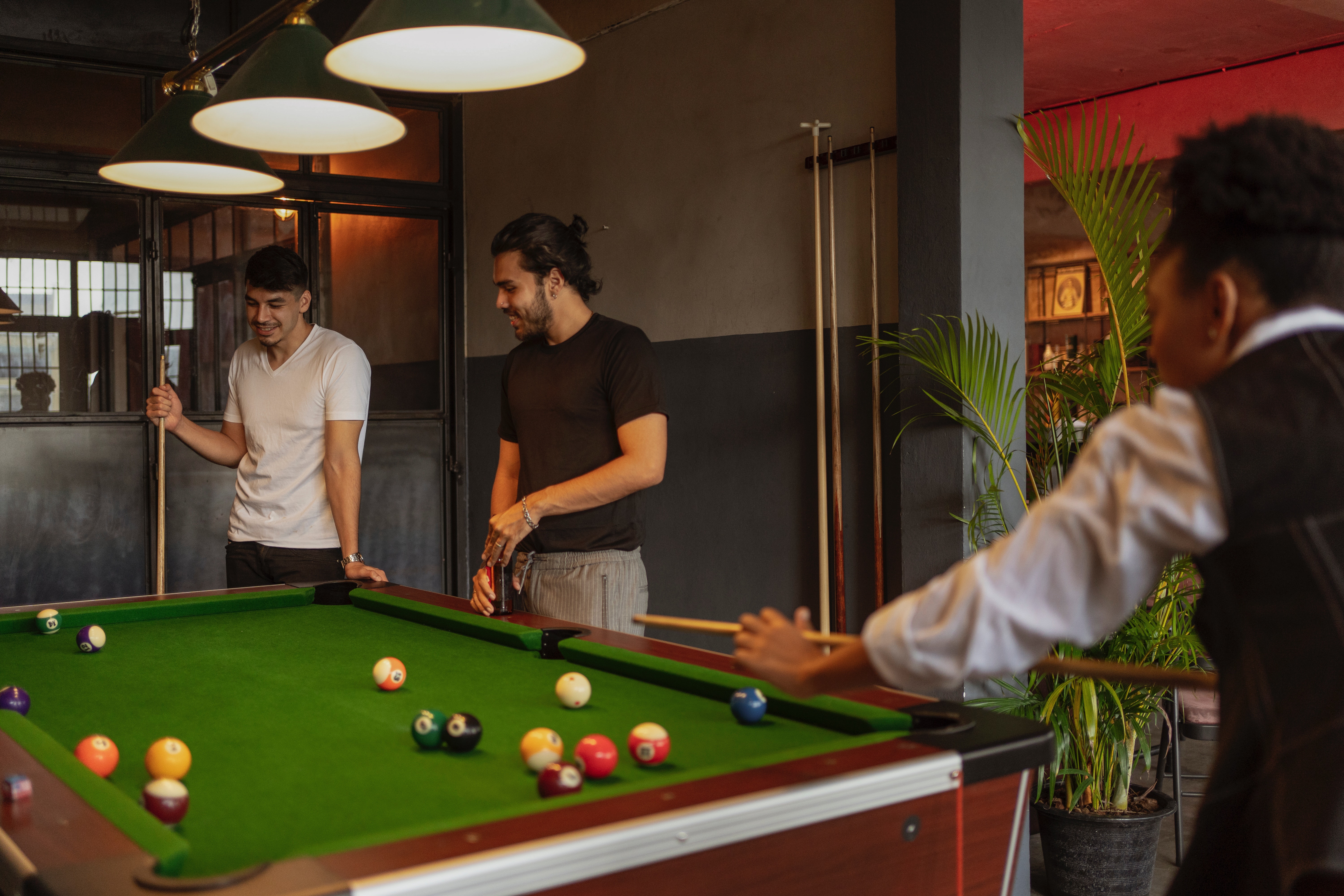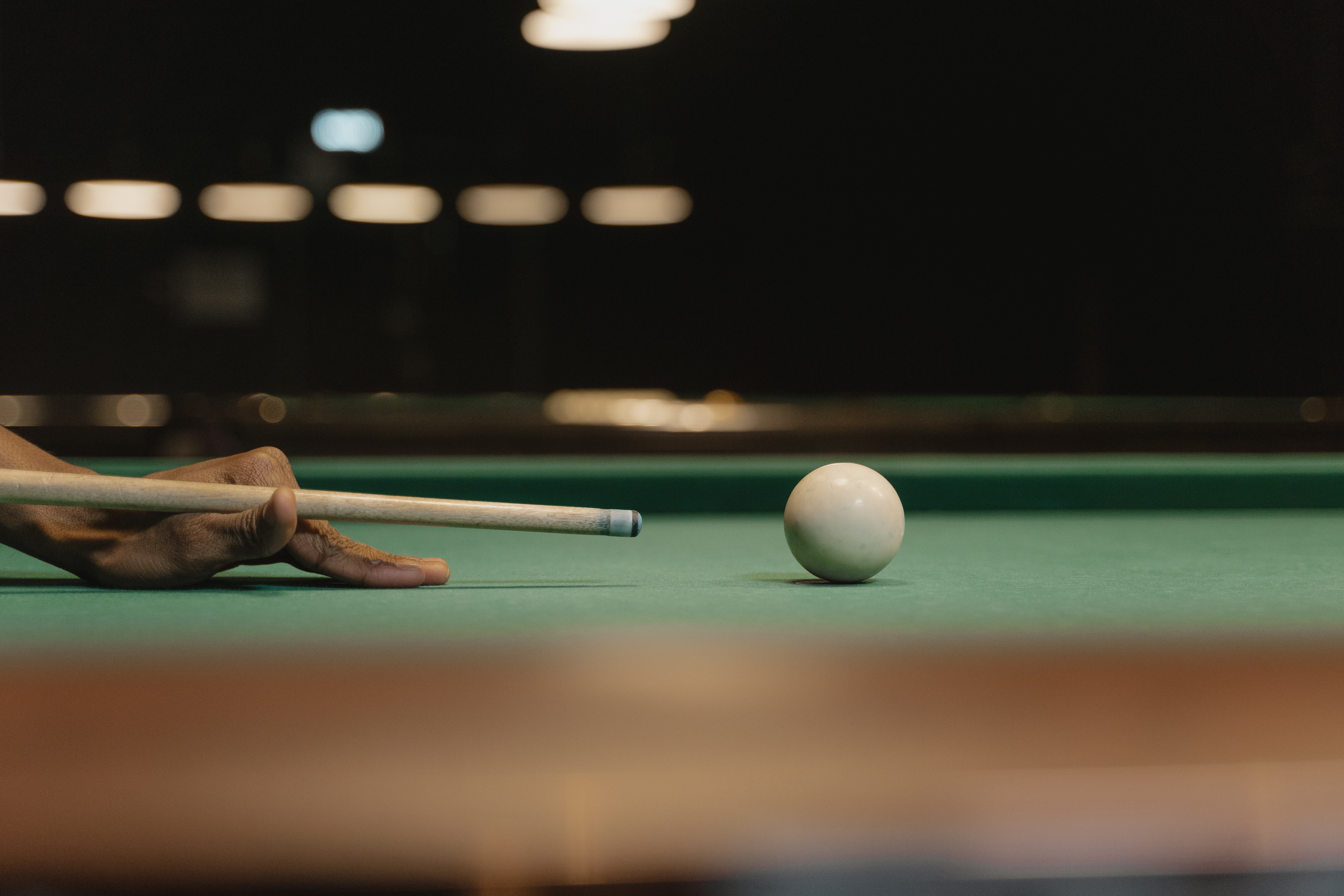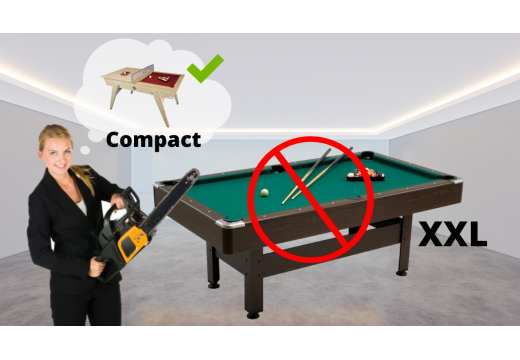- Table soccer
- Available stock
- Tradition table soccer
- Outdoor table soccer
- Prestige table soccer
- Coiners
- Handisport table soccer
- Giant table soccer XXL
- Table soccer Toi & Moi 1VS1
- Secure table soccer
- Collaboration Racing Club de Lens
- Belgian table soccer
- Table soccer spare parts
- Accessories
- Goodies Stella
- 24 Heures du Mans
- Pool table
- Spare parts
- Stella Games
- Stella House
- Customization
- Contact
Blog categories
- Table soccer and billiards news (36)
- Games rules (12)
- Maintenance of table soccer and billiards (5)
- Football Table tips & tricks (8)
- Billiard tips & tricks (14)
- Darts tips & advice (3)
- Decorating & furnishing (8)
- Collaborations & Partnerships (6)
- Foosball tournaments (12)
- Exhibitions & Events (14)
- Professional and public areas (7)
- Culture & History (6)
Search in blog
The rules of American billiards
American billiards is characterized by the simplicity of understanding the rules of the game and by the multiplicity of its variants. Here is what you can play with your Stella Chiberta pool table.
While the official table dimensions are 2.80 x 1.40 meters, the Chiberta is distinguished by its compact size of 1.60 meters, allowing it to fit into even the smallest of spaces. The table has 4 pockets at the ends and 2 pockets in the middle.
What equipment is needed to play pool ?
No matter what rule or variation you decide to play, it is advisable to use two cues, a heavier break cue and a game cue. When you buy a Stella billiard table, you will be provided with four cues, two of 145 cm and two of 122 cm, allowing you to combine technique and sensations. It is also possible to complete your equipment by purchasing additional cues. In addition, Pool is played with 16 balls, 15 of which are numbered - those from 1 to 8 are solid and the others are striped - and one cue ball, which are all delivered with your Chiberta.
There are four modes of play that we suggest you discover: the 8-ball game, the 9-ball game, the 10-ball game, and the 14/1 continuous.

8-BALL BILLIARD
The 8-ball game, the most famous, is played by two players with all the marbles. The objective of this game rule is to pocket all the marbles in your group (full or striped) before finishing with the black one (the 8-ball).
How to prepare the pool table?
You must first form the triangle. To do this, you just have to place the 8 ball in the middle and the other balls randomly, avoiding that the three points of the triangle are part of the same camp and that a line of identical balls is formed. Then, the triangle must be placed on the fly of the starting point. Finally, the cue ball must be placed in the desired location within the break zone. The break zone is delimited by two flies.
How to determine the player's color or group?
Pool is played with two players or with two teams of two, each of which is characterized by a group, that of striped balls (from 9 to 15) or solid balls (from 1 to 7). The camp of each player is defined according to the first break. Indeed, the participant having made the break is granted the group of the ball having been pocketed first.
What is the purpose of the game?
As mentioned earlier, this rule of the game is relatively simple. It consists in pocketing the marbles of his group before ending with the black one. The player continues the game as long as he pockets marbles without committing any fouls.
If you decide to play with a named shot, there are additional constraints to the existing ones. Indeed, before pocketing a ball, you have to name it as well as the hole in which you wish to pocket it.
What actions are sanctioned as faults?
Different fouls can lead to a change of player, the opponent having the advantage to play the next shot, and sometimes even to place the cue ball freely. For example, skipped or massaged shots are considered fouls if the cue ball moves. In addition, in a named shot game of pool, if the named ball is not pocketed and neither the cue ball nor a ball in its group has hit the rail, then it is a foul.
Can we lose the game without the opponent pocketing the 8 ?
It is quite possible to lose the game without finishing the pool game. This happens if you make any of the following mistakes:
First, if you make one of the mistakes seen above when you pocket the 8.
Second, if you pocket the 8-ball without having pocketed all the other balls.
Third, if you throw the 8-ball off the table.
Fourth, if you pocket the 8-ball in a pocket other than the one named (if playing named shot).

9-BALL BILLIARD
The 9-ball game is also played by two players with balls numbered from 1 to 9. The principle is simple: you have to pocket the 9 ball by hitting the lowest numbered ball on the table at each turn. It is often recommended to pocket all the other balls before tackling the 9-ball.
How to prepare the pool table?
Balls 1 through 9 should be placed in a diamond with the 1 on the break point and the 9 in the middle. The cue ball must be placed in the desired location within the break zone. The break zone is delimited by two flies.
What is the purpose of the game?
The 9-ball game aims at pocketing the 9-ball, by touching at each shot the ball with the smallest number. Thus, the game will be won by the player who manages to pocket the 9-ball, either directly once all the other balls have been taken out, or in combination, i.e. indirectly by the ricochet of the cue ball on the lowest ball.
The player continues to play until a foul is committed or he fails to pocket. In the latter case, the opponent takes over. If it is a foul, the opposing player may position the cue ball anywhere he or she wishes.
What actions are sanctioned as faults?
Like all other games of pool, fouls can be committed, allowing the opponent to take over and place the cue ball anywhere on the playing surface. Balls that have been pocketed on fouls are not returned to the table, except for the 9-ball, in which case it is returned to the break point. The different fouls are as follows:
First, if you do not hit the lowest numbered ball on the table.
Second, if you pocket the cue ball.
Third, in the case of a jumped ball.
Can we lose the game without the opponent pocketing the 9 ?
It is quite possible to lose the game without pocketing the 9, although this is rarer than with the 8. This is only the case when the player makes three consecutive fouls in one game.
10-BALL BILLIARD
The 10-ball game is played with balls numbered 1 to 10. The rule is similar to that of the 9-ball game, the difference being that the pocketing of the 10-ball is what wins the game.
As for the preparation of the table, the balls are arranged in a triangle, with the 1 on the break point and the 10 in the center.
14/1 CONTINUOUS
Continuous 14/1 is played with the 15 numbered balls and the cue ball. The objective of this billiard game is to pocket the balls designated in the chosen and stated pockets. Since each ball is worth one point, the winner is the one who reaches the number of points defined at the beginning of the game, hence the interest in getting as many balls as possible out of the pockets per round. The name 14/1 continuous comes from the fact that the triangle will be reformed with the first 14 balls pocketed -the 15th remaining on the table- until the number of points is reached. Before breaking the triangle again, the last ball must be pocketed.
Related posts
-
 What type of game to choose for a pool table?
Posted in: Billiard tips & tricks27/09/2022Discover all our advices to find the billiard that suits you according to your favorite game: French billiard,...Read more
What type of game to choose for a pool table?
Posted in: Billiard tips & tricks27/09/2022Discover all our advices to find the billiard that suits you according to your favorite game: French billiard,...Read more -
 How much space do I need for my compact pool table?
Posted in: Billiard tips & tricks29/09/2022How much space do you need for your Stella compact pool table: American pool table, French pool table and golf pool...Read more
How much space do I need for my compact pool table?
Posted in: Billiard tips & tricks29/09/2022How much space do you need for your Stella compact pool table: American pool table, French pool table and golf pool...Read more -
 How do I maintain my compact pool table?
29/09/2022Wondering how to maintain and care for your Stella compact pool table? We give you our tips on cleaning the table,...Read more
How do I maintain my compact pool table?
29/09/2022Wondering how to maintain and care for your Stella compact pool table? We give you our tips on cleaning the table,...Read more
